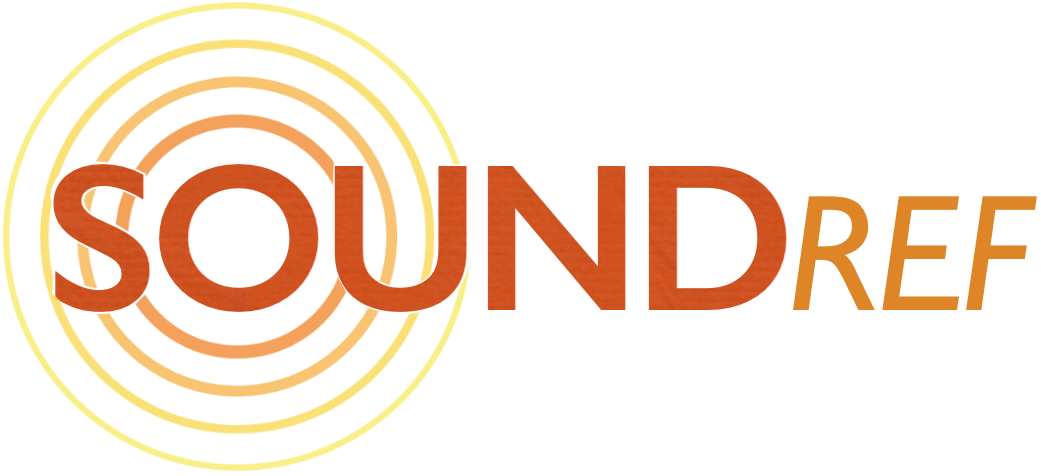Choosing the best studio headphones for music production
With so many types of headphones, which ones are best suited to your studio?
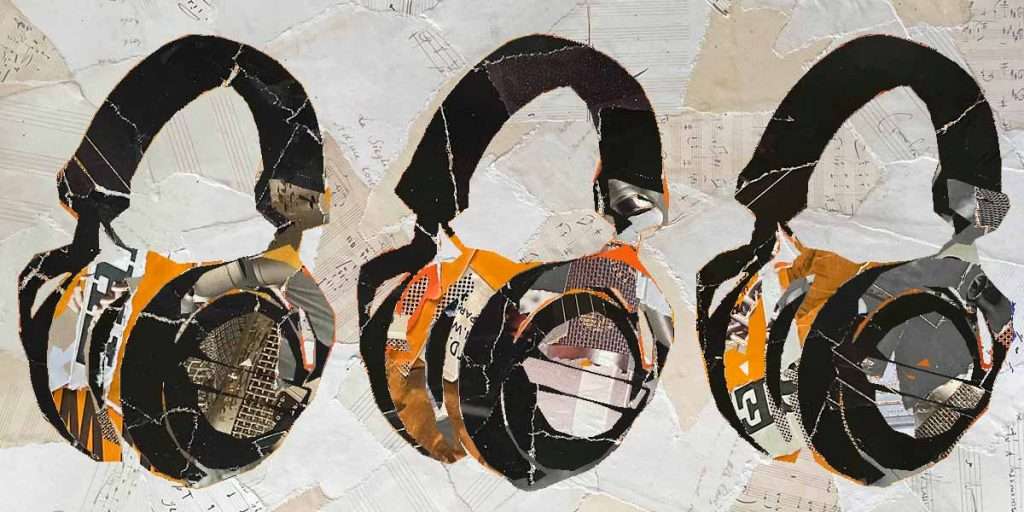
Article by: Paul Narang
Date: May 2023
Every recording studio will need at least one pair of quality studio headphones. But for music production, you’ll need to consider buying more than one pair for different tasks.
For mixing, editing and mastering, there’s:
And for musicians to wear while recording, there’s:
If you’re on a budget, or you only want one pair of headphones:
Studio monitors vs headphones
Most of you will be carrying out most of your mixing on a pair of studio monitors. But what if your monitors are small, and lack the low bass frequencies? This is where a pair of open back headphones can come in really handy. You’ll be able to check the mixes periodically, to get a good estimate of what the bass really sounds like.
It’s the same for anyone who hasn’t acoustically treated their room with panel absorbers and bass traps. You won’t be hearing an accurate representation of your music, as the sound of the room can really distort the sound from your monitors. This is where you can use a pair of open back headphones to check the details.
Open back headphones for mixing and editing
Using headphones is like looking through a magnifying glass, where you can fine tune the details, perfecting the EQ, and making sure there’s no frequency clashes. You’ll also hear a vocalist’s breaths, and any pops or distortions you might have missed.
It’s a way to hear the sound directly. Perhaps not the most natural way to experience music, but very useful for getting a clear indication of what you’re working with at source. It’s just what you need for close up listening while editing.
Open back headphones have a naturally airy and open sound because they’re designed with a grille section which allows sound out, and into the room. Stereo imaging becomes clearer and wider, and you can hear exactly where the sound sources are placed on the sonic stage.
There’s two reasons why the open back style might be the best studio headphones for mixing and mastering:
- Room acoustics
If you have a small or odd shaped room, and you haven’t invested in acoustic treatment, you won’t be getting an accurate representation of your mix. So anything you change to sound good on your speakers, might sound wrong on another sound system. The best open back studios headphones are very accurate, and will give you the confidence to know you’re making the right mixing decisions.
- Complaining neighbours
We don’t all have the luxury of fully sound proofed studios. In fact many recording musicians work from a corner of the bedroom, or at a desk in the lounge. Using headphones means you can keep working through the night without annoying your flatmates, family or neighbours.
- Working on the move
I’ve used open back headphones to mix and edit musical material in cafes, temporary recording setups, and shared workspaces. It’s incredibly liberating, to be able to travel with just a lightweight laptop and pair of studio headphones.
Limitations of mixing on headphones
Listening on headphones, no matter how good they are, will always be a different experience to listening on studio monitors. The very fact that you can hear everything in so much detail means you might find yourself leaving some parts too low in the mix. So make sure to check the sound on speakers from time to time, so you can compare the two sounds.
Open back studio headphones aim to deliver an accurate, revealing sound, rather than make the music sound good. But to sound natural, there has to be a substantial boost in the bass, to make up for the lack of physical bass you’d get from a speaker.
When you first start mixing on headphones, it can take a while to judge the right amount of bass for your mixes. One good trick is to try comparing your mixes with commercial mixes of a similar genre.
Over time you’ll soon get used to the sound of your headphones, and will intuitively know what translates well to speakers.
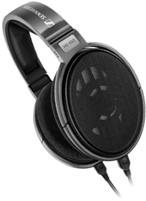
I use a pair of Sennheiser HD 650 (Amazon) headphones for late night mixing, or getting a quick second opinion on my mixes.
They have a very natural sound and reveal hidden details I wouldn’t have otherwise heard.
About the Sennheiser HD 650
For my needs the Sennheiser HD 650s are the best studio headphones for mixing and mastering. There’s much more expensive models, such as the HD 800 S and the HD 820, but for value, the HD 650 are unbeatable, and very popular as reference headphones throughout the music industry.
I find them really comfortable for long listening sessions, often completely unaware I’m wearing them after a while. They have a very refined, neutral sound, with no extra bass or excited upper range frequencies to fatigue my ears.
The detail is exceptional, with a well balanced and intimate soundstage. I’d describe it as having an honest, accurate sound which immediately makes clear anything which needs adjusting – volume levels, panning, Eq and effects levels. I also plug it directly into a laptop with no problem at all.
Closed back headphones
Closed back headphones are designed differently to open back models. Rather than prioritising audio quality, they prioritise efficiency in sound leakage. The best closed back studio headphones don’t allow much, or any sound into the room, making them ideal for ‘tracking’ – recording while listening to a backing track.
Closed back headphones for tracking
Ideally you don’t want any of the backing track to leak out of the headphones, or it will get recorded along with the vocalist. It limits what you can do with the recording – you want the cleanest sounding tracks as possible for editing, mixing and arranging.
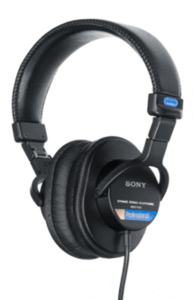
Closed back headphones lack the clarity and accuracy of open back headphones. But they’re great at containing the sound within the ear cups, which is far more important for tracking.
I use Sony MDR-7506 (Amazon) headphones for tracking. Many studios have several pairs of these on hand.
More about the Sony MDR-7506 headphones
When choosing a pair of headphones specifically for tracking, the most important factor is sound leakage. This should be given higher priority than the quality of the audio.
The Sony MDR 7506 has some of the lowest leakage of all closed back headphones, making it the ideal choice when you need to contain the backing track, and stop it getting picked up by the microphone.
They’re comfortable and lightweight, without too much pressure on your ears. This is a good combination for the studio, as you want your recording artists to feel as natural as possible.
The sound is surprisingly good for the price, with a reasonably balanced sound and prominent bass. The higher frequencies are a little too pronounced for critical listening, but for tracking they sound great.
Semi open back headphones for the studio
Semi open back headphones are a combination of open and closed back headphones. They’re open, but not to the full extent of open back headphones.
I used to have a pair of the budget AKG M80 Mkii headphones which sounded great for the price, but I believe they have now been discontinued.
I don’t see much use for semi open back headphones in the studio, as they’ll bleed sound while tracking, and limit the audio quality while mixing.
One pair of studio headphones for music production
If you only have the budget for one pair of studio headphones, for mixing, mastering and recording, look for a pair of high quality closed back headphones. Using just one pair of headphones in the studio is a compromise, but certainly possible.
Consider a pair of high quality closed back headphones, such as the Audio-Technica ATH-M50x. The sound quality is very close to open back headphones, with a well balanced sound across the frequency response. Comparing the M50x to the Sennheiser HD600, the biggest shortfall is in hearing the soundstage clearly. There will be some limitations in fine tuning the panning of instruments.
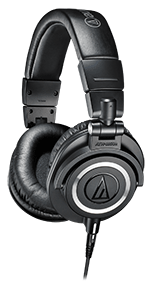
One great benefit of the Audio Technica ATH-M50x is if you’re in a noisy environment – the closed design will help keep sound out, so you can hear what you’re doing.
It also works the other way, keeping sound in if you need to mix in a quiet space like a library.
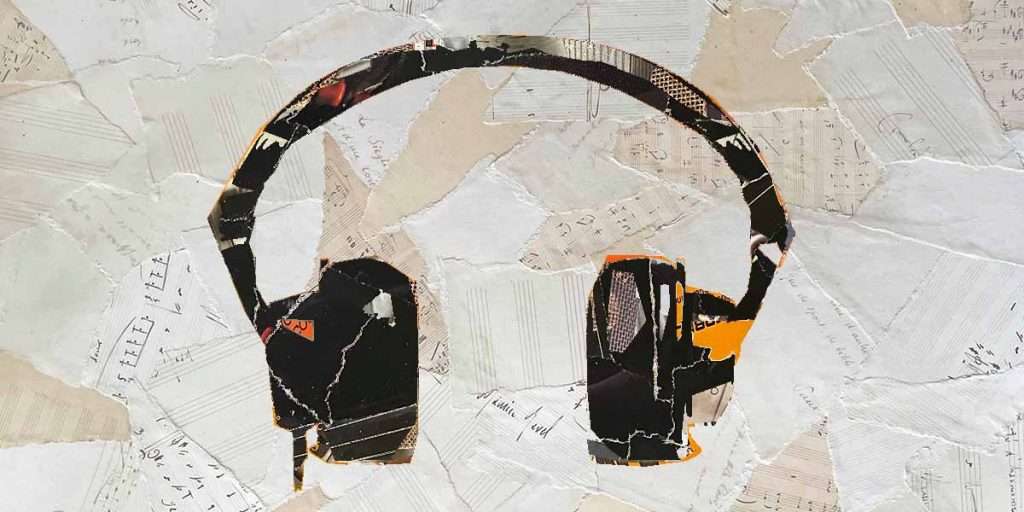
Earphones and IEMs
In ear monitors, or IEMs are generally used on stage to enable performers to clearly hear themselves and each other. But they can also be used in the studio for tracking as some musicians find them more comfortable than the standard closed back headphones.
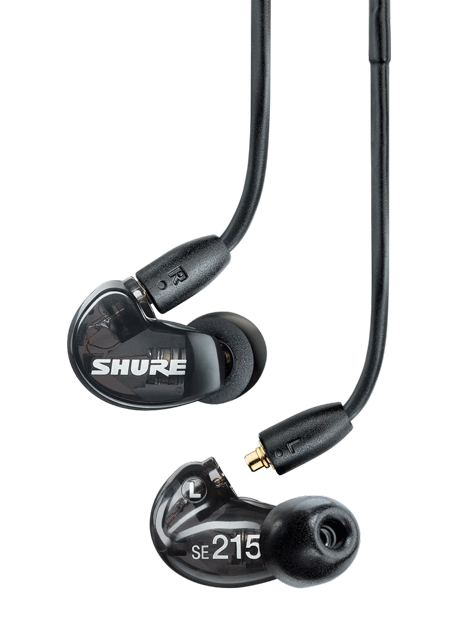
There’s a huge range of earphones to choose from, with high quality sound and sound isolation. For the very best, there’s the Shure SE846 Pro.
But if you’re using these for tracking in the studio, there’s the industry standard, and budget friendly Shure SE215 Pro.
Headphone amplification
You might be wondering if you need a separate amplifier to go with your high quality open back studio headphones.
It depends on something called impedance. Don’t worry if this confuses you – you’re a musician, not a physicist!
Headphone impedance
Impedance is an ohm measurement (Ω), which tells you how much amplification your headphones require.
Standard headphones are commonly 32 ohms, which is considered low impedance. These don’t need much power, and are well matched to potable devices, like mobile phones.
But high quality studio headphones can be anything up to 600 ohms. If you plug these into a mobile phone, they won’t have enough power, and will suffer in sound quality.
Normally every model of headphones has its own impedance rating. But the Beyerdynamic studio headphones make an exception, and come in a choice of 32, 250 and 600 ohm models.
Using the right headphones for the job
If you intend to listen critically, for mixing or mastering, its important that you hear accurate sound through your headphones. That’s why it’s important to match the impedance of your headphones with your audio device. Not matching properly can result in unwanted coloration or a reduction in bandwidth.
Correct ‘impedance matching’ means using an audio device that has an output impedance less than one 1/8th of your headphone’s impedance. For instance if you have a pair of headphones with the standard 32 ohms, you should be matching it with a (portable) device which has an output impedance of less than 4 ohms.
But if you have a pair of fancy studio headphones, they’re likely to be higher impedance – perhaps up to 600 ohms. So in theory, to get the best sound from these headphones, you’d need an audio interface with a headphone impedance of less than 75 ohms.
So to be on the safe sound, choose an audio interface with LOW impedance.
Headphone sensitivity
When looking at amplification requirements, there’s something else to consider too – sensitivity or efficiency. This is a measurement of volume at a specific power input. It’s typically measured as decibels per unit of power (dB/mW). Like impedance, sensitivity also affects volume, but in a different way.
Do I need a headphone amplifier?
My Sennheiser HD650 is 300 ohms. I plug them into the headphone socket on my audio interface, which works with a wide range of impedances. I’m very happy with the quality of the sound.
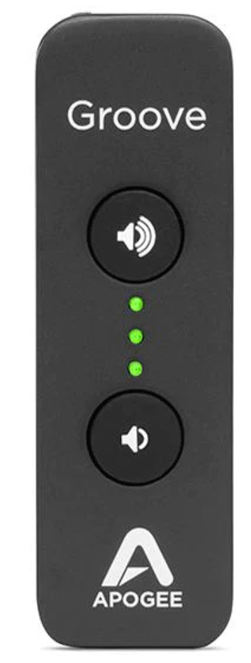
If I was plugging them into my Mac laptop or iPhone, they’d still work fine, just a little quieter.
But if I needed to do some critical editing or mixing with just the laptop, I’d look into getting a separate headphone amplifier, such as the tiny USB powered Apogee Groove (Amazon), to boost the signal.
Glossary: Circumaural vs Supra aural
Most studio headphones are cup shaped – they completely envelop the ear. This is the case for both open and closed back headphones. The technical name for this is circumaural.
- Circum = surrounding
- Aural = the ear
Some other consumer headphones sit on the ear, and are called supra aural.
- Supra = on top of
- Aural = the ear
Conclusion
Investing in a pair of quality open back studio headphones for your studio is a wise choice. A pair of reference headphones will give you the clarity needed for checking those tiny details in the mix that you might not have even been aware of. That’s until you hear your mix on somebody else’s speakers, when it may be too late!
If you get to know one pair of headphones well, you’ll eventually get used to the sound, and you’ll instantly know how they translate onto a pair of loudspeakers. Also, if you need to mix at an unfamiliar studio, you can take your headphones along for a familiar reference.
You can even do the majority of your mixing on studio headphones. Just make sure to check regularly on your studio monitors or another sound system, to make sure you’re happy with the overall sound balance.
